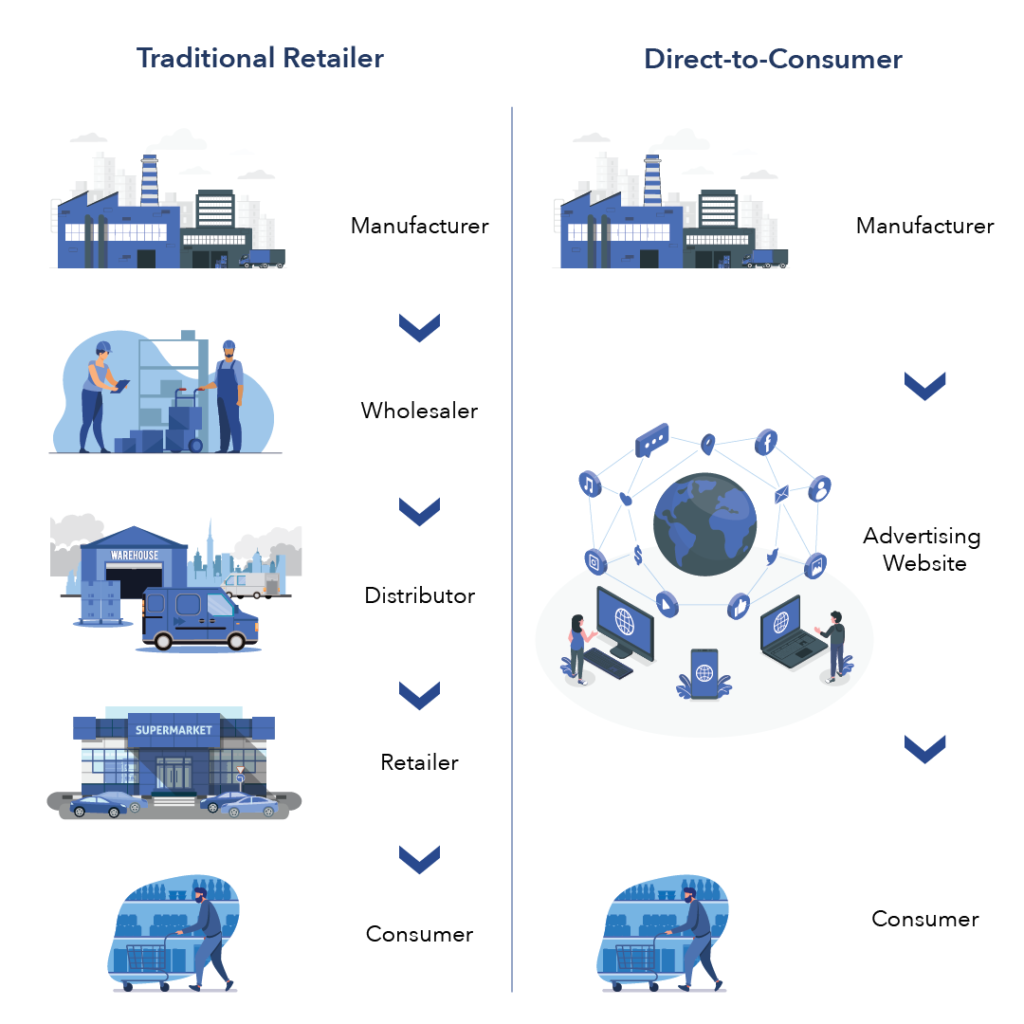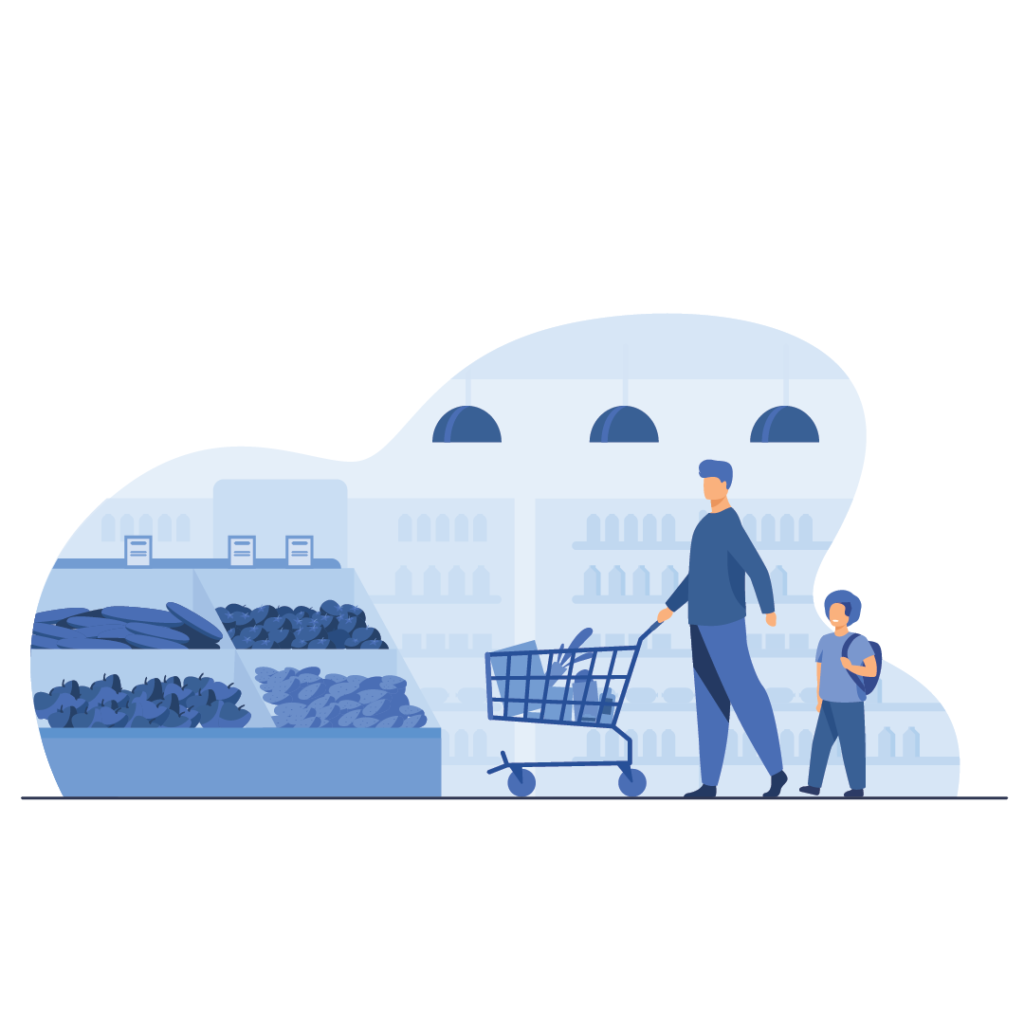
What Is Direct-to-Consumer (D2C) eCommerce: All You Need to Know
Over the past few years, direct-to-consumer (D2C) eCommerce has grown exponentially and continues to do so. The D2C brands of today are radically changing consumer preferences and expectations. The sales for D2C eCommerce in the US alone are expected to reach $175 billion by 2023.
A D2C strategy not only eliminates the barrier between the producer and the consumer but also gives companies greater control over their brand. It helps companies enter the market directly instead of a middle-man entity.
Here, in this article, we’ll discuss the various aspects of D2C so you have a better understanding of what D2C commerce is all about.
Understanding the basics - What is D2C eCommerce?
Direct-to-consumer (D2C) eCommerce involves companies manufacturing and shipping their products directly to buyers without relying on third-party entities or middlemen like the traditional retail stores.
It’s a practical model where companies own the consumer journey. In the D2C eCommerce model, brands take care of not only product manufacturing but also marketing, distribution, sales, and customer experience.
Why choose D2C? - Key benefits
The reason D2C is becoming so popular is because of the obvious benefits it offers. Some of these key benefits include –
- D2C gives brands complete control over the value chain. It simplifies the complex value chain by cutting down the middlemen. This enables brands to have complete ownership of the brand experience delivered. Brands, therefore, can build great rapport with their customers, without having to rely on retailers.
- D2C eCommerce offers brands a greater potential to cut down costs. Without middlemen, there are better margins. Moreover, since brands can sell through novel channels like social media, they earn profits at a lesser price as compared to traditional retail.
- D2C significantly reduces the friction for market entry and there is a lesser barrier for businesses to reach their potential customers.
- D2C allows brands to get feedback directly from their customers. They can better understand their customers’ preferences and churn out offerings accordingly.
- D2C offers a holistic omnichannel experience. Customers these days expect to connect and order products from brands through multiple channels. D2C helps with that by offering multiple touchpoints for customers to interact with.
Difference between D2C e-commerce and a traditional retailer business model

As opposed to a D2C eCommerce model where brands sell directly to customers, a traditional business model involves bulk purchases where products reach retailers through wholesalers and distributors. Some other key differences include –
Factor | Traditional retailer | D2C |
Relationship with customers | Relationship with customers is not direct because of involvement of multiple parties | No middlemen. Direct relationship with customers |
Branding control | Due to the involvement of multiple stakeholders, the communication mode between manufacturer and consumer is not so direct | Since there is direct communication with customers, it allows brands to have direct control of marketing and branding |
Pricing | The traditional model does not have the option to offer a subscription to customers and, therefore, has inconsistent revenue | D2C model often works with subscription-based pricing, thus offering a consistent revenue |
Digital advertising | The traditional model may or may not rely on digital advertising and digital traffic because most of its sales happen through retail stores | D2C business model relies heavily on digital traffic and digital advertising |
Personalization | Traditional retail business model does not have the option of collecting data and personalizing its offerings | D2C brands have access to a lot of user data since they function online. This allows hyper-personalization |
Profits | Due to the involvement of middlemen, the profits are reduced | In D2C, the likelihood of making profit increases because of a lack of third-party stakeholders |

Key statistics associated with D2C eCommerce
Let’s look at some numbers that highlight the growing importance of D2C eCommerce –
- One out of three consumers reported buying directly from a manufacturer’s website in the last year.
- In China, the value of the D2C market is expected to reach 123 billion by 2024.
- D2C sales in the UK are expected to reach 120 billion by 2023.
- Grove Collaborative, a D2C eCommerce company raised a funding of $474.5 million till December 2021.
- There were 500k jobs linked to D2C sales in the UK in 2020. The number is expected to reach 618,000 by 2023.
Challenges associated with D2C eCommerce
D2C eCommerce is only a bed of roses. There are many challenges that brands face with D2C. Here are some of the key ones –
- Competition with retailers – One of the biggest challenges for those in the D2C space is competition with retailers. These retailers already have experience in product sales and they understand the market needs much better.
- Order fulfillment – Many new D2C brands often struggle with order fulfillment. That’s because these brands not only need to ship their products but also compete with market leaders like Amazon and others for quick deliveries.
- Marketing, advertising, and growth – Running marketing campaigns has become quite expensive. Moreover, handling social media and content marketing may require hiring new teams which new D2C brands might not have the sufficient budget for.
- Technical infrastructure – To properly execute a D2C strategy, companies need a proper technical infrastructure in place. This can be difficult for brands that are just starting out.
- Changing customer habits – Customers these days look at shopping from multiple platforms including websites, apps, social media, and so on. This can be difficult for D2C brands if they aren’t willing to embrace new channels often.

The future of D2C eCommerce
Thanks to the growing internet availability and a general shift in consumer behavior, D2C eCommerce seems like it’s going to stay here for a while.
The push given by the pandemic has accelerated the growth and demand for D2C sales. Brands ranging from FMCG, cosmetics, manufacturing, etc. are leveraging the D2C model to sustain and grow.
Brands that have been quick to adapt to the D2C eCommerce model have reported impressive growth.
How to get started in D2C eCommerce?

Entering a D2C market comes with many risks and challenges. If your brand can do it well, you can set yourself for success for years to come. Here are a few tips you can follow to get started with D2C –
- Focus on customer experience – Exceptional customer experience is crucial if you want to launch a D2C brand. Take time to analyze all the customer touchpoints and use data to determine areas of improvement.
- Offer a cohesive experience at both offline and online channels.
- Use the right technology solutions to ensure your D2C plan succeeds in the long run. Use a platform that empowers all teams to work efficiently and collaboratively.
- Look for ways to consistently improve the customer journey. Use A/B testing, data analysis, and innovative marketing ideas to boost your marketing efforts.
Looking to read more such informative articles on eCommerce and marketing? Then check out Dresma’s blogs.

